When it comes to your home's utility bill, do you feel like you can't catch a break? You're not alone. Whether it's cooling off your home in the summer or wrapping in warmth during the chilly winter months, keeping comfortable can be an expensive challenge for many homeowners.
While some factors are out of your control - like inflation and gas prices - there may be some common culprits for your high bill hiding in plain sight. Let's go through the most common sources of energy loss and potential solutions - some of which may even put money back into your pocket.

First, review your utility bill
Too often, people don't closely analyze their utility bills. And, for good reason - it sounds complicated and intimidating. But, when you fail to do some simple assessments, you end up paying more in the long run.
To get a better idea of where your money is going, grab your most recent utility bill. It lists how much electricity your home used for the given month listed in kilowatt-hours (kWh). This is the amount of energy being used by appliances and devices as well as the power it took to heat and/or cool your home.
The kWh consumed multiplied by your area's utility rate equals your bill plus fees and taxes. If your bill seems overly high for the number and types of appliances and devices in your home, the problem may be the energy required to heat and cool your home.

You may have a home energy leak
Is your home cold and drafty in the winter despite your best efforts? Hot and humid in the summer? You may have an energy leak.
Heating and cooling your home can be as much as 70% of your total energy use. But, if your home has an energy leak, you're paying for warm or cold air that immediately escapes outside rather than staying inside where it belongs. That means you could be adjusting your thermostat, overworking your system, not getting any relief and paying a higher utility bill. Not an ideal situation, right?
Assessing energy leaks is tough to DIY - more on that in a minute - because the issue may not be coming from where you think. Sure, that drafty window is letting some conditioned air out, but it's likely not the biggest energy loss source in your home.
To properly evaluate your home's energy efficiency, schedule a professional assessment from one of our trained experts.
Top six energy loss areas in your home
Wondering where most of that "bought" air is going? Here are the "leakiest" areas in your home, ranked from least to most for energy loss. Our handy rankings help you see how you can get the biggest return out of your home improvement investment.
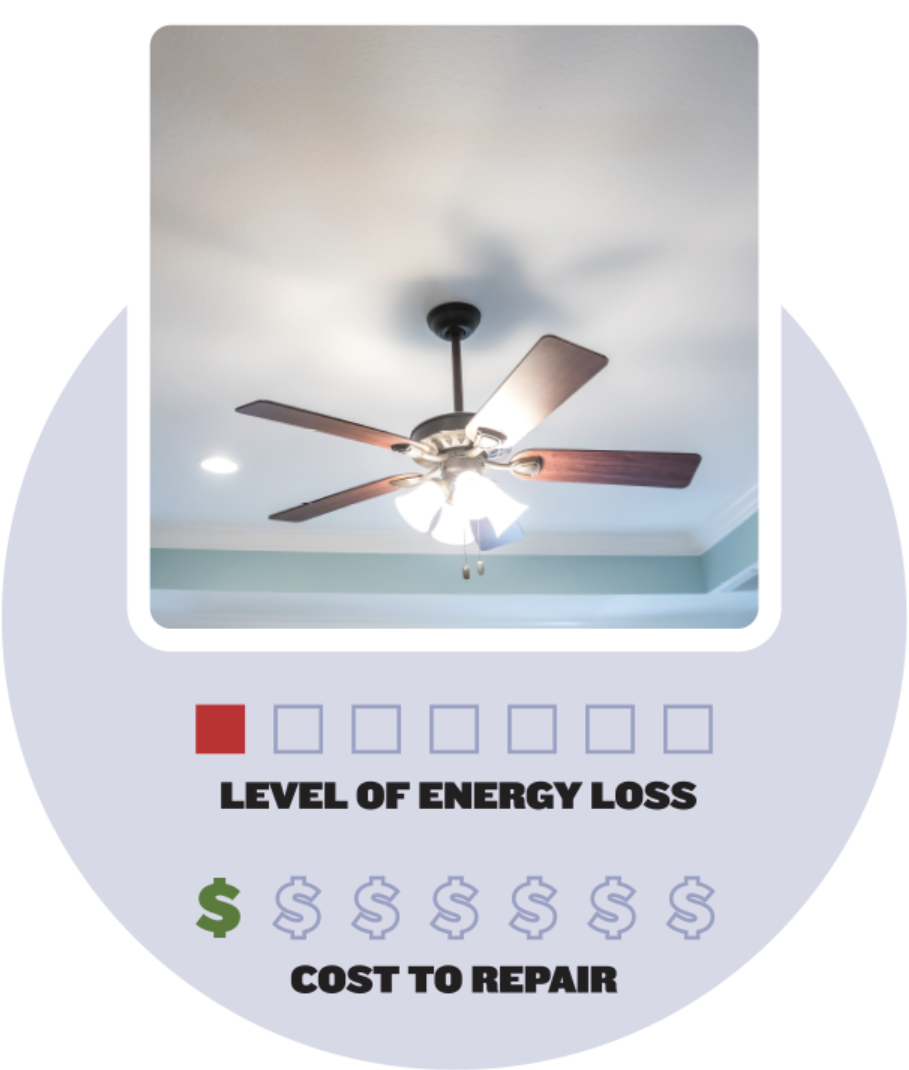
#6 Ceilings
You've likely heard that warm air rises because it's lighter than colder air. That's what's happening with the small percentage of heat that's escaping through any cracks or holes in your home's ceiling.
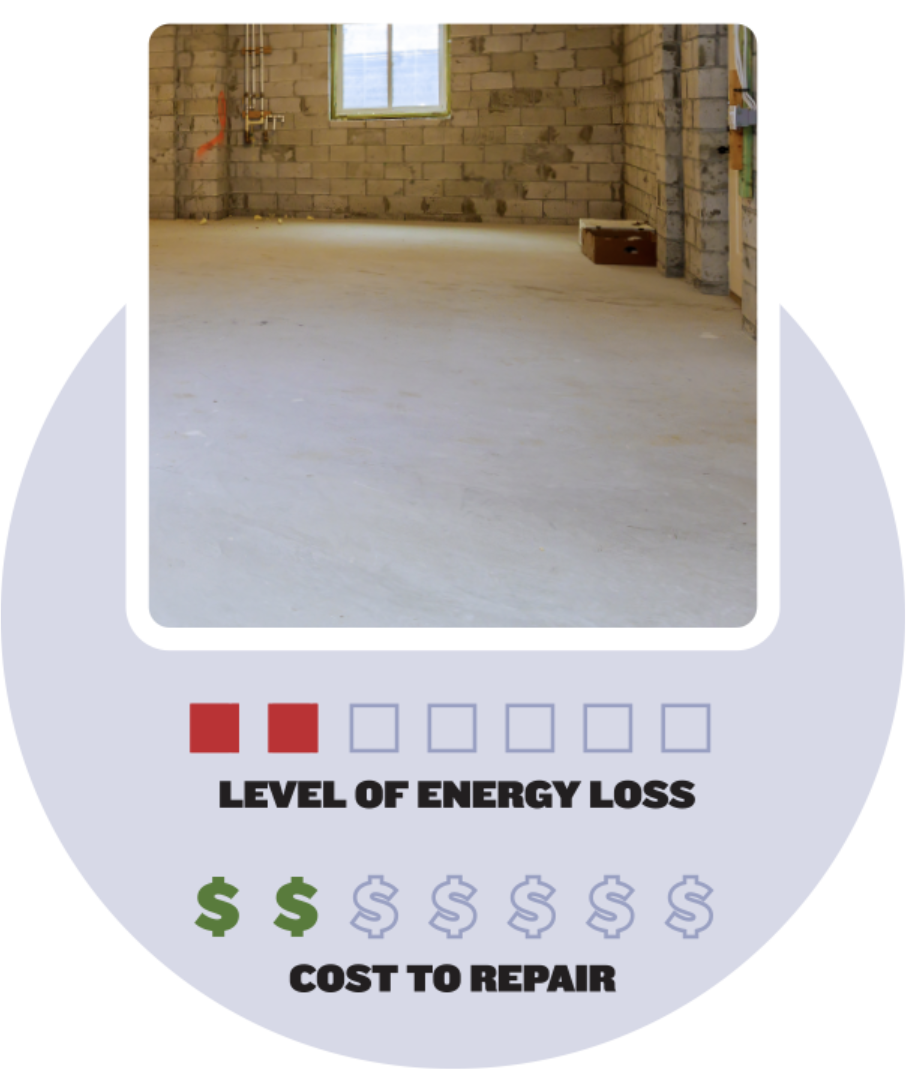
#5 Basement floors and crawlspace
Your basement floors aren't releasing much of your home's energy, but that doesn't mean it's insignificant. Even small steps can make an impact.
If your basement floor is made of concrete, consider installing some carpet or laying tile on top of it. You could use spray foam or caulk to seal any cracks or openings in the crawlspace or floors.
Don't forget to check the openings around gas, water and electrical lines, ducts, and wiring that connect to the outside of your home. These could have gaps or holes that need sealing.
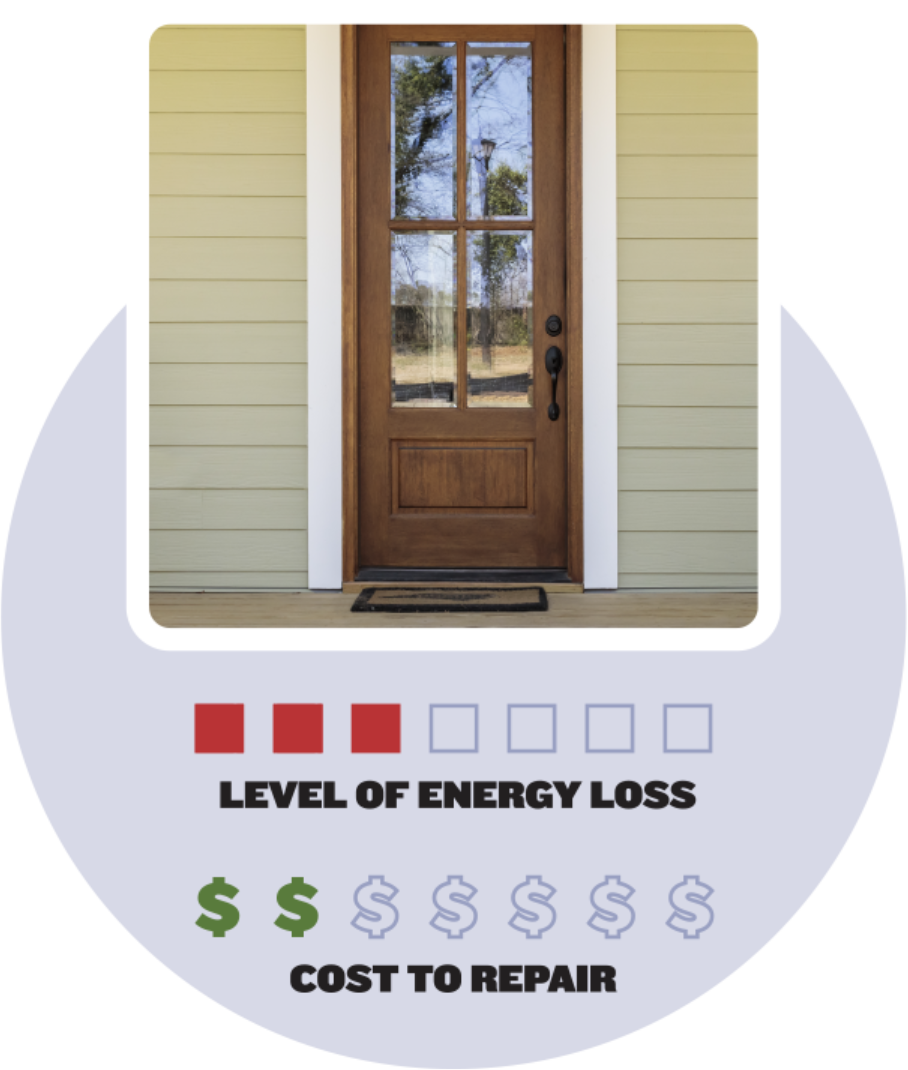
#4 Exterior doors
Even if your door has a small crack, that can contribute as much air loss as a 2.5-inch wall hole. Repair cracks with caulk or foam and install weatherstripping around any moving parts. You may also want to slide a door sweep along the interior side of your door.
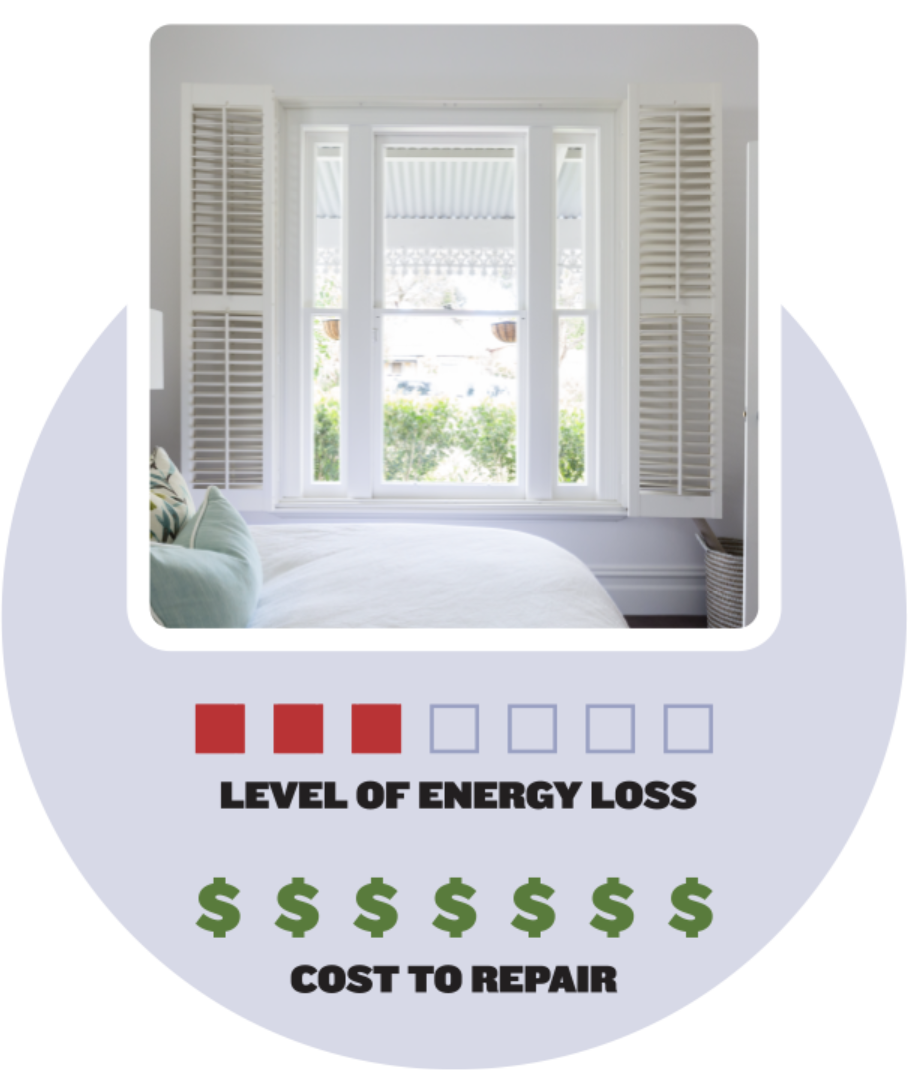
#3 Windows
Think most of your home's energy is lost through your windows? Think again. Just because you can feel the drafts around your windows doesn't mean it's having the biggest effect on your energy use. In fact, windows account for only 10% of a home's energy loss. But, because people commonly assume that windows are the biggest energy loss culprit, they choose to have their windows professionally replaced.
Window replacement is a major home project and comes with a hefty price tag. According to a recent Forbes article, double-hung vinyl windows cost around $600 to $950 per window. And that estimate doesn't include labor costs, ranging from $100 to $300 per window, or energy efficient upgrades.
To make matters even more complicated and expensive, your windows may not be standard size if you have an older home, so you'd have to pay for custom sizing. This isn't even taking into account the time, mess and hassle of window replacement.
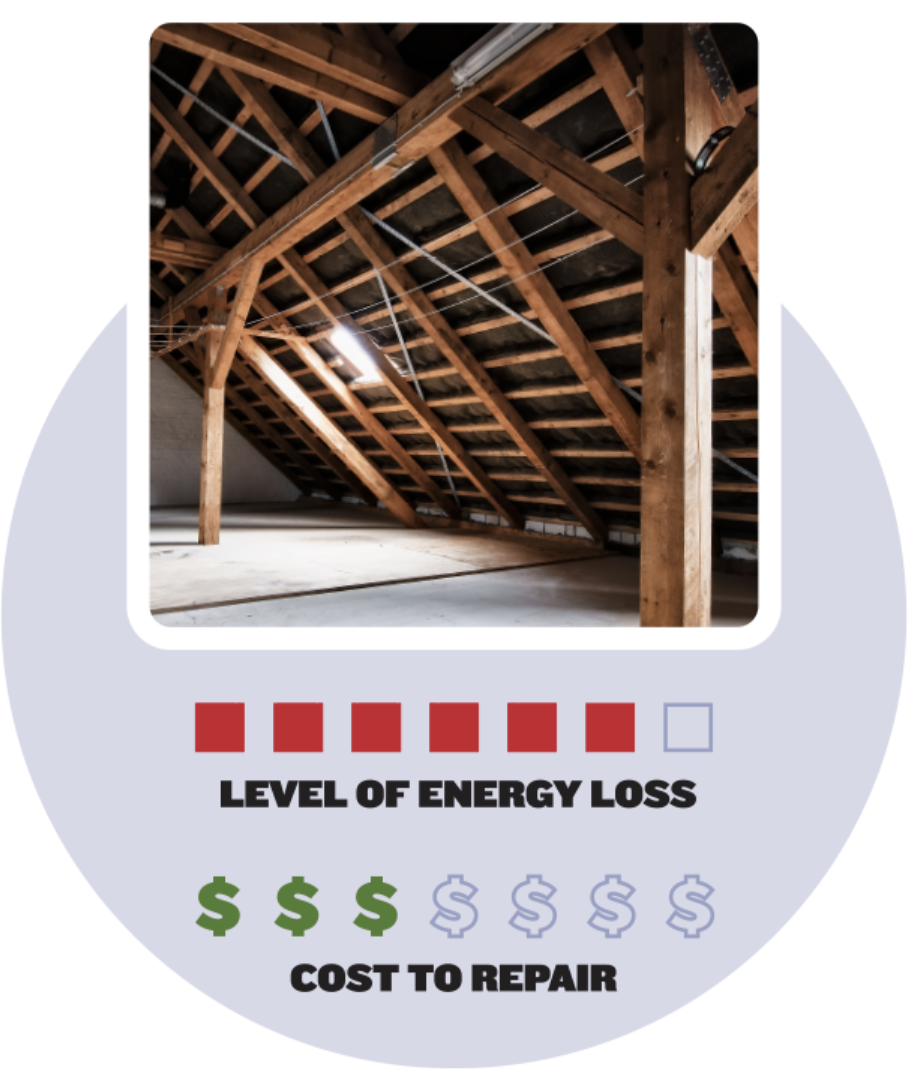
#2 Attic
Attics are often the most insufficiently insulated part of a home. In fact, energy loss through the attic can account for up to 25% of your home's total loss. When an attic isn't adequately insulated and ventilated, it loses conditioned air very quickly.
The U.S. Department of Energy recommends that homeowners have at least 11 inches of blown-in insulation in their attics. If your attic's insulation depth is below the recommended level, it's time to have a professional inspection.
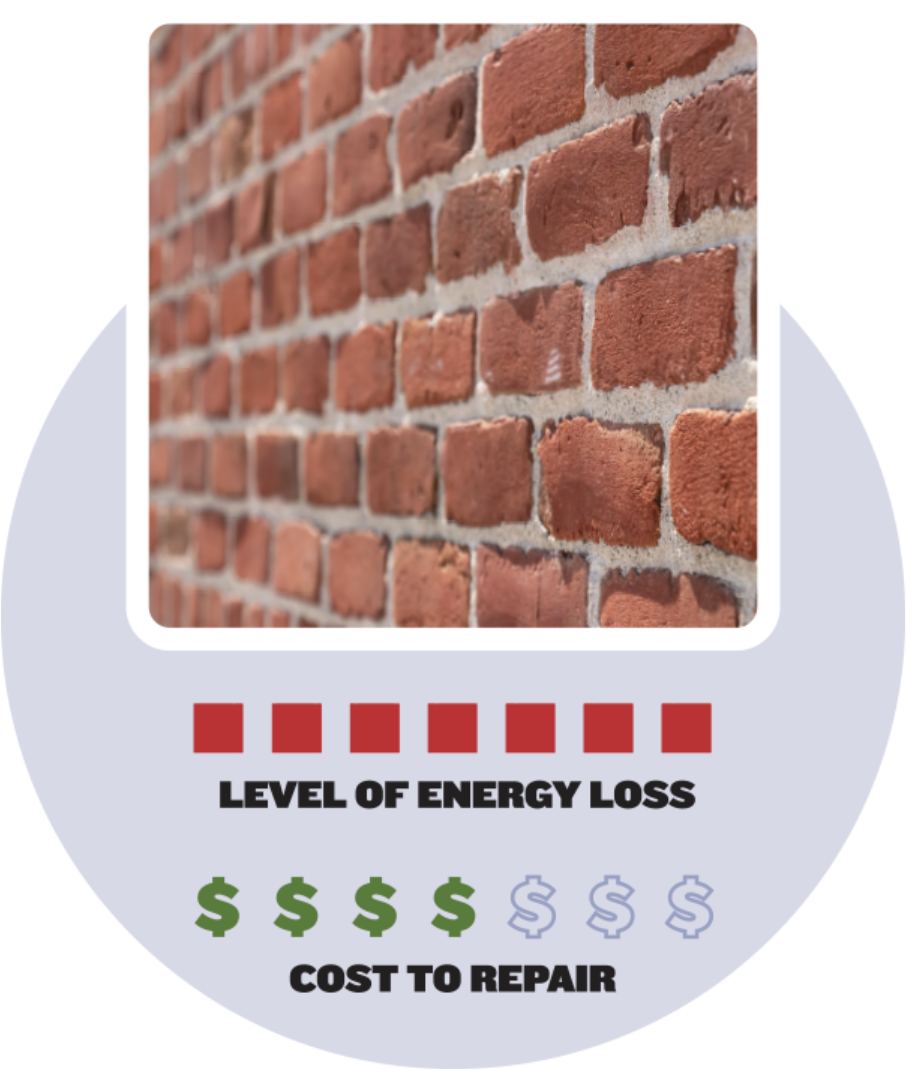
#1 Walls
Contrary to popular belief, the majority of home energy loss happens through the walls - totaling up to 35%. This extreme energy loss is one of the biggest causes of sky-high utility bills.
If your walls are leaking energy, the reason is insufficient insulation. But there's good news if you have this issue - the solution is fast, clean and comes with a significant tax benefit.
How to fix energy leaks in attics and walls
Like we said before, it's tough to perform an energy assessment on your home. For the best results, trust the job to the professionals at USA Insulation. Our complimentary home energy assessment is quick and thorough. We'll determine areas where your home can be more energy efficient and offer a customized solution.
Schedule Your Free Energy Assessment Now
If the energy loss is primarily coming from your walls, we can fix the problem with our USA Premium Injection Foam Insulation®. This proprietary product is injected into wall spaces with a fast installation process, filling cracks and crevices that most other insulation products can't. The insulation fills spaces behind electrical and phone wires, pipes, electrical outlets, and other areas for maximum efficiency - and maximum utility bill savings, meaning wall insulation pays for itself over time.
USA Premium Injection Foam Insulation®:
- Is typically installed from the outside of your home in less than one day
- Starts working immediately to make your home more comfortable
- Saves you money on utility bills and pays for itself over time
Earn a tax credit when you improve your home's energy efficiency
As part of the Inflation Reduction Act of 2022, you can earn up to 30% tax credit worth up to $1,200 for making energy efficient home improvements. And, yes, home insulation qualifies for this credit.
This tax credit was implemented by the federal government to provide incentives for homeowners to make energy-efficiency home improvements. The credit is intended to help offset the cost of these upgrades, can be claimed on your annual tax return and may reduce the federal taxes you pay as a homeowner.
Learn More About the New Tax Credit Benefits
Ready to save some money on your utility bill AND your tax bill? Sign up for a free home energy assessment today.



